International Poultry Hall of Fame
IPHF recipients 1988
At the Council and General Assembly of the World’s Poultry Science Association on 8 September 1988,during the XVIIIth World’s Poultry Congress held in Nagoya, Japan, those listed below were elected to the International Poultry Hall of Fame. This honour has been bestowed in recognition of the major contributions these 25 individuals have made to the development of the poultry industry of the world.
World’s Poultry Science Journal (1998) 44: 124-152.
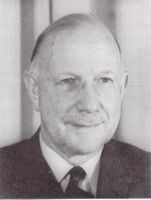
William Percy Blount
United Kingdom
Dr. Percy Blount was born in Derby, England, in 1905 and died on 10th July, 1968 while marking examination papers for the National Diploma in Poultry Husbandry. He graduated from the Royal College of Veterinary Surgeons in 1928, being made a Fellow of the College three years later. This time was spent at the Royal Dick Veterinary College, Edinburgh, during which he became Assistant to the Professor of Anatomy.
After a year as a Veterinary Officer in the Poultry Disease Diagnostic Laboratory of the Ministry of Agriculture at Weybridge, he became Superintendent of a private Poultry Disease Research establishment in Berkshire. A period of private practice was followed in 1936 by Percy Blount becoming Chief Veterinary Officer for East Sussex County Council. In 1938, he was awarded a PhD by Edinburgh University. After early war service in Europe, he became Veterinary Head of the country’s Chemical Defence Experimental Station.
Joining the British Oil and Cake Mills in 1946, Dr. Blount developed a highly effective poultry disease diagnostic service for the customers of this major feed compounding company. He was conscious of the vital need for more experimentation and testing—especially in the areas of poultry nutrition and feeding and the many facets of husbandry. It was on a field behind his house in Stoke Mandeville, Bucks, and using wood from ex-army packing cases, that in 1946 he established what was to become a very successful and internationally recognised experimental and research farm. During the 1950s, the facilities at Stoke Mandeville were greatly expanded, and a second research farm was set up at Selby, Yorks. Pioneering work was carried out on systems of production and on poultry house ventilation and insulation. It was also the result of Dr. Blount’s enthusiasm that the first random sample laying tests to operate in the UK were established at both these centres and operated from the mid-1950s to the late 1960s. As a result of his efforts, a third experimental farm was set up near Belfast in Northern Ireland. In 1957, he became a Director of British Oil and Cake Mills, London.
Although Dr. Blount traveled widely and became known as a highly knowledgeable poultry husbandry expert in many countries, it was particularly within the British Isles that he established his reputation as an accomplished and highly regarded speaker at innumerable conferences. He had an impish sense of humour that deflated many a pompous lecturer. But he was also a precise and highly skilled practitioner in his own field. Within the veterinary profession, he held many offices and posts of standing and honour, including President of the British Veterinary Association.
Within the WPSA, Dr. Percy Blount was, in 1946, the chief architect of the United Kingdom Branch, having propounded the idea of national branches earlier the same year (WPSJ Vol. 2, No. 3, p. 113). It was at this time also that Dr. Blount became one of the main advocates of an early post-war Congress and was much involved in bringing about the VIIIth Congress in Copenhagen in 1948. Percy Blount was the first President of the United Kingdom Branch of the WPSA and a Vice President of the World Association from 1966 until his death in 1968.
“Bill” Blount was an excellent, stimulating, and generous friend who never forgot services he received, which were usually repaid many times over. It was characteristic of him that as the chief poultry adviser of an international company, the firmness that was often demanded in his business and personal dealings was mediated by full attention to the little courtesies of life.

A. Wade Brant
USA
Dr. A. Wade Brant was born on March 28, 1919, in Isabel, Kansas. He grew up on a farm in rural Kansas where he was active in 4-H poultry activities. He earned degrees in Poultry Husbandry and Poultry Nutrition at the Universities of Kansas State and Michigan State, going on to a PhD in Poultry Products Technology at Iowa State University in 1949.
From 1949 to 1959, Dr. Brant was employed by the US Department of Agriculture, Beltsville, Maryland, becoming Chief of the Poultry Research Branch at Beltsville. During this time, he was a scientific adviser to the USDA Trade Fair in Italy (1957) and started a 14-year stint on the Animal Products Advisory Committee of the US Army.
From 1959 to 1985, Wade Brant was an Extension Food Technologist at the University of California at Davis, serving also as a consultant for the USDA’s Cooperative Research Service. He was a member of the Science and Education Advisory Committee for the Western States. In the early 1970s, he served on a team of poultry experts that worked to establish a modern poultry industry in Egypt. During his career, Dr. Brant spent one-year sabbaticals in The Netherlands and in Japan, in both cases focused on poultry research.
Wade Brant served on committees and received awards too numerous to list. A sample of committee activity must include Chairmanship of the Research Council of the Institute of American Poultry Industries (1955-83) and membership on the Poultry and Egg National Board Committee from 1967 to the present day (Chairman 1967-80). After Dr. Brant retired in 1985, he continued and expanded his consulting activities on a private basis. This work took him to a number of countries, the most recent being Malaysia in 1986.
Dr. Brant’s interest in the World’s Poultry Science Association and international poultry industry activities started in conjunction with his participation in the VIIth World’s Poultry Congress in Cleveland, USA, in 1939. He attended Congresses in Edinburgh (1954), Mexico (1958), Australia (1962), the Soviet Union (1966), Spain (1970), USA (1974), Brazil (1978), and Finland (1984).
Dr. Brant was one of the founding members of the USA Branch, WPSA, and later served as Branch President. For many years, he was a WPSA Council member. Since 1978, Dr. Brant served diligently as the Treasurer of the World’s Poultry Science Association.
Dr. Brant’s primary interest has always been the poultry industry. He has, however, been a recognized expert in the red meat industry. For example, he continues to serve on the Western States Meat Association Sausage Committee. Currently, he is Chairman of the California Meat Inspection Advisory Committee.
Dr. Brant’s love of his work has kept him busily engaged serving the USA and worldwide poultry industries. He has gone far beyond the call of duty in his service to these industries and to the World’s Poultry Science Association.

Edward brown
United kingdom
Edward Brown was born in 1851 and died on August 8th, 1939. At the family home near Newcastle on Tyne, an early interest in poultry was stimulated by a magazine illustration of domestic fowls by Harrison Weir. This led him to breed Brahmas (very popular at the time) and then Brown Leghorns. Although successful as an exhibitor, Mr. Brown was among those who were critical of the malpractices and corruption that were widespread at poultry exhibitions, and which had not been brought under control by the Poultry Club, formed in 1864. In an effort to improve matters, in 1877 he was involved in a re-launch of the Poultry Club and in the formation of the Northumberland and Durham Poultry and Pigeon Association.
An attempt in 1879 to found and edit a new journal in Newcastle, the Fanciers’ Chronicle, failed within a year. However, in 1880, following the departure of Lewis Wright from editorship of the Live Stock Journal, Mr. Brown was invited to edit its “Minor Livestock” section and he moved to London. This launched him on a career in journalism focused on poultry.
Edward Brown’s interest had always been concentrated on the egg and meat production potential of poultry, and this led to his involvement in the formation of the Utility Poultry Society (later the National Utility Poultry Society) in 1896 and to the first laying trials in 1897. The need for better training also received his attention and he became a teacher. The first “Poultry School” (which lasted 3 weeks) was held in Whittlesea, Cambridge, in 1894. Other such “schools” followed and led, in 1896, to the establishment of a poultry course at the University College of Reading’s farm at Theale, Berkshire. Up to the time of its closure 14 years later (due to lack of financial backing), 600 students were to pass through the course. Meanwhile, in 1899, also at Reading, Mr. Brown organised the first National Poultry Conference in the UK (what has been described as the first International Congress of Poultry was held in St. Petersburg, Russia, in the same year).
In 1908, in the United States, the International Association of Poultry Instructors (to become the Poultry Science Association) was established at Cornell University. Initially, it is believed, the term “international” was not intended to mean “world,” just the United States and Canada. However, in 1910, Professor James Rice (the first Professor of Poultry Husbandry) and by then President of the Association, wrote to Mr. Brown suggesting the formation of a truly international organisation. This led to a meeting in London of 19 individuals from 14 countries, at which this objective was achieved, the names being transferred from the North American to the world body. (It was not until 1938 that the name was changed to the World’s Poultry Science Association.) Mr. Edward Brown was named President—a post he was to hold for 15 years—and Dr. Raymond Pearl (USA) Secretary. The first major meeting, planned for 1916, was deferred due to the 1914-1918 war. Thus, the 1st World’s Poultry Congress was held at The Hague, Netherlands in 1921.
In 1920, Edward Brown became President of the newly formed National Poultry Council for England and Wales. The policy of this organisation included “promotion of education and investigational work,” the “awarding of Certificates and Diplomas,” and “the raising of the standards of instruction and instructors.” As a result, in the same year, the (British) National Poultry Diploma Board was established, followed in 1926 by the National Poultry Institute Scheme with centres for teaching at Harper Adams Agricultural College and for research at six other locations. Much of the money needed was raised by public subscription, inspired by Mr. Brown.
Over his lifetime, and always with an emphasis on the practical, Edward Brown wrote 21 books and published reports ranging from Practical Artificial Incubation (1879), Profitable Poultry Keeping, written under the pen name Stephen Beal (1883), and Poultry Keeping as an Industry for Farmers and Cottagers (1891), which ran to 18 editions, to British Poultry Husbandry: Its Evolution and History (1930) and his memoirs Memories at Eventide (1934). His reports on the poultry industries of America, Belgium, Denmark, Germany, Ireland, The Netherlands, Sweden, and Wales serve to indicate his interest in travel, which had been undaunted when, as a 14-year-old attempting his first visit abroad, he was shipwrecked at Whitby, Yorkshire, on his way to Antwerp.
Recognition of Edward Brown’s contribution to the world poultry industry included the conferring of an Honorary Doctor of Laws by McGill University, Quebec, in 1927 and, in the same year, his investment as Chief Bear Head of the Sarcee Tribe of Indians, Calgary, Alberta, Canada. In 1930, he was made a Knight of the British Empire, Sir Edward having come to be regarded as the father of British poultry education and science.
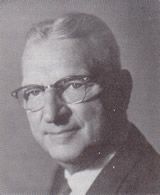
Cliff d. carpenter
USA
Dr. Cliff D. Carpenter was born in Unadilla, New York, on July 18, 1897. He grew up on a farm in the Empire State.
After receiving his DVM degree at Cornell University in 1920, Dr. Carpenter served on the research staff of the University of California for three years, in charge of the University’s Avian Pathology Laboratory at Petaluma. In 1923, he established the first private poultry veterinary practice in the United States.
In 1929, Dr. Carpenter opened a branch laboratory and practice at Van Nuys, California. In 1935, he sold his business to the Lederle Laboratories, a division of American Cyanamid, at which time he became Director of Cyanamid’s first poultry division. He resigned in 1938 to do graduate work in poultry pathology and genetics at the University of Kentucky, where he received his MSc degree in Agriculture.
In 1939, Dr. Carpenter joined Allied Mills to take charge of Allied’s field service programme and public relations. From March 1943 to August 1944, he was on loan from Allied Mills to the War Food Administration, where he directed national programmes to establish wartime poultry expansion projects (in cooperation with the US Secretary of Agriculture).
From 1944 to 1958, Dr. Carpenter was President of the Institute of American Poultry Industries, a trade association with heavy emphasis on poultry and egg processing and marketing. During that time, he was co-chairman of the US Public Health Service’s committee, formed to develop a uniform sanitation code for poultry plants. He later spearheaded the programme which led to the present USDA poultry inspection programme for wholesomeness.
In 1955, Dr. Carpenter initiated the International Trade Development (ITD) programme for the US poultry industry. This programme opened trade for US poultry meat products into approximately 24 countries.
Dr. Carpenter also served as Chairman of President Eisenhower’s bi-partisan committee on increasing the use of agricultural products. This committee placed particular emphasis on international trade.
Following his resignation from the Institute in 1958, Dr. Carpenter established the consulting firm of Cliff D. Carpenter & Associates. The Associates consulted on poultry production, processing, and marketing.
Dr. Carpenter was Vice-Chairman of the US Participation Committee for the XIIth World’s Poultry Congress (Australia).
In the early 1960s, Dr. Carpenter served with a group of individuals who founded and incorporated the USA Branch of the World’s Poultry Science Association. He served as the first Branch President. It was in that capacity in August 1965, that he was speaking to the Board of Directors of the Poultry Science Association at the association’s annual meeting in Athens, Georgia—promoting the XIIIth World’s Poultry Congress—when he died of a massive heart attack.
The late Dr. Cliff D. Carpenter truly was a pioneer in promoting eggs and poultry and the poultry industry in all its aspects on an international basis. He went far beyond the call of duty in rendering his services. He was a genuine ambassador of goodwill for the world’s poultry industry and the World’s Poultry Science Association.

Federico Castelló de Plandolit
Spain
Federico Castelló de Plandolit was born on 3rd February 1896 in Arenys de Mar, Barcelona, Spain. He was the fourth among the ten sons of Professor Salvador Castelló Carreras, the founder of the “Real Escuela Oficial y Superior de Avicultura” (Royal School of Poultry Husbandry), one of the founders also of the World’s Poultry Science Association, and has been considered the “father” of the Spanish Poultry Industry.
Federico Castelló studied in the College San Luis Gonzaga, in Barcelona, and obtained his Bachelorship Diploma in 1914. After doing his military duties from 1915 to 1916, he joined his father at the School, which at that time included the activities of “Granja Paraiso,” also founded in 1896 and used as a demonstration commercial farm for the students.
In this way, from a very young age, Federico Castelló, collaborating with his father as well as three younger brothers, was in a position where poultry science and practice worked together to improve the poultry husbandry methods used at the beginning of this century.
He attended the first World’s Poultry Congress—The Hague, 1921—and the last one, the fourteenth, in Madrid, 1970. He collaborated with his father in the organization of the second World’s Poultry Congress, in Barcelona in 1924. However, the big personality of Professor Salvador Castelló did not allow the work done by his sons to be manifest.
Up to 1950, the poultry courses at the School were given mostly by his father, but Federico Castelló gave some practical lessons and training to the students. He collaborated also with Professor Salvador Castelló in some books and journal articles, mainly in editions of the first poultry magazine published in Spanish, Avicultura Práctica (1896 to 1920) and other magazines published later by the School: Mundo Avícola (1922 to 1936) and Temas Avícolas (1941 to 1959).
When his father died in February 1950, the business was split in two: the commercial farm, to be owned by Enrique Castelló, and the School, by Federico Castelló. In this way, commercial activities of the farm were separated from those of the School, which concentrated more actively on the same aims as the WPSA, namely research, education, and extension.
From 1950 to 1958, the activities of the School, under the Direction of Professor Federico Castelló, were concentrated on teaching, the publication of the magazine Temas Avícolas, and a new consultancy service.
Federico Castelló never kept any information or knowledge that could be used for his own profit, and whether inside or outside the classroom, his objective was to explain the most complicated matters in ways that could be easily understood by everybody.
Subjects dealt with in Temas Avícolas are a good example of this. It was an 8-page popular magazine, like a monthly newsletter, produced in Spain during the years when everything was difficult to obtain, from the paper for printing to the feedstuffs for poultry rations. And Federico Castelló made all efforts to give to the 2,000 subscribers he had the latest technical information in the most understandable way.
During this time, he wrote the following books:
• Dietario del Avicultura, 1st edition in 1951 and other 3 editions, enlarged, in 1953, 1955, and 1957.
• El nuevo arte de criar gallinas, a 282-page book, published in 1956 as a continuation of the six editions of a very well-known book of his father, El arte de criar gallinas.
• Higiene del gallinero, a 332-page book, in 1954.
• Curso de gallinocultura industrias anexas, a 640-page textbook for his students, in 1956.
In 1958, conditions changed abruptly when the economic policy of the Spanish Government allowed the importation of foreign strains of birds, as well as soybean meal, US corn, and other feedstuffs. Spanish students and poultrymen started to travel abroad in order to learn foreign techniques, and Federico Castelló sent immediately—1958/59—his son, José A. Castelló, to Penn State University, United States, in order to incorporate the most up-to-date techniques into the teaching of his School.
In 1959, he started the publication of a new magazine: Selecciones Avícolas. It became very popular, with a maximum of 5,000 subscribers in 1965, exceeding all other Spanish poultry magazines at that time. Federico Castelló wrote each month the editorial comment, as well as other articles, translating also many articles from foreign magazines.
In 1960, Professor Castelló started also the publication of another magazine: Boletín Técnico de Avicultura. It was a 32-page monographic publication and the 12 titles published up to 1962 were written almost entirely by him.
Other books published during this time by Federico Castelló were:
• El nuevo arte de criar gallinas, 2nd edition, 1960—438 pages.
• Avicultura en batería, in 1960—346 pages.
• Curso de Avicultura, the new edition of the textbook of the School. It was published in 1964, and Professor Castelló had the collaboration of his son José A. and Dr. Narciso Marcé.
In 1961, the school changed its site from the foundation place opened in 1896. The cost of the new building was met entirely by Professor Castelló, without any government or private help.
Federico Castelló became a member of the WPSA in the early 1950s, encouraging his son José A. to look at its aims and sending him to the X World’s Poultry Congress, held in Edinburgh, 1954. He had a lot of correspondence with the Directors of WPSA at that time, Professor Heuser in the USA, Major Macdougall in the UK, and others in order to establish a Spanish Branch. This Branch was founded in 1961, with Professor Castelló as the senior member of it.
Federico Castelló was an active writer in several Spanish poultry publications, including Avicultura Técnica, Granja, Avicultura Española, Calendario del Payés, etc. He also gave many lectures, attending National Congresses and Meetings.
After the nomination of Spain to hold the XIV World’s Poultry Congress, when the Organizing Committee was formed, Professor Castelló was invited to join the Economic Subcommittee. From 1967 to 1970, being over 70 years old, he traveled very frequently to Madrid for his duties.
His working capacity was tremendous, always giving an example to his collaborators and students. He died from a heart attack on May 4th, 1973, three days after he had given his last lesson to his students.

Donald Robert Clandinin
USA
Dr. Donald Clandinin was born in Vandura, Saskatchewan. He attended the University of British Columbia and graduated with a Bachelor of Science in Agriculture in 1935 and a Master of Science degree in Poultry Genetics in 1936. He obtained a PhD degree in Biochemistry and Poultry Nutrition from the University of Wisconsin in 1948. Dr. Clandinin joined the staff of the University of Alberta in 1938, specializing in Poultry Nutrition, and retired in 1979 and now holds Professor Emeritus status.
Dr. Clandinin has made significant contributions to the advancement of the knowledge of poultry nutrition. His early research dealt with the use of riboflavin in poultry diets. The results of this work demonstrated that synthetic riboflavin products could be used to replace the riboflavin provided by milk products in diets for chicks and breeding hens without affecting growth rate, egg production, or hatchability. After completing the work on riboflavin, he undertook research on the influence of processing conditions on the nutritive quality of protein supplements such as soybean, herring, sunflower, and rapeseed meals. The results of this research led to the adoption by processors of procedures that would minimize the loss of nutritive quality.
In the last twenty years of his research career, much of Dr. Clandinin’s work was concentrated on factors affecting the nutritive quality of rapeseed meal. His research has included studies on the influence of metabolizable energy, amino acids, tannins, pentosans, sinapine, nitrogen solubility, dye-binding capacity, and levels of available lysine on the nutritive value of meal. He has also conducted research on the influence of high and low erucic acid oils on tissue changes in chickens, and his outstanding contributions to knowledge of factors affecting the nutritive value of protein supplements have led to Dr. Clandinin’s recognition as an international authority. He is the author or co-author of 145 scientific papers. He has also written several technical and farm bulletins on poultry production.
Dr. Clandinin has been active in helping to promote the use of rapeseed products throughout the world. He has, by invitation, represented Canada on technical missions to Japan, Taiwan, England, Ireland, Holland, France, Germany, Sweden, Italy, Spain, Cuba, Morocco, Tunisia, Algeria, Finland, Denmark, Hungary, Czechoslovakia, and the United States of America. By providing scientific information on the use of rapeseed meal, he has contributed to increased international market expansion and utilization for this important Canadian crop.
Dr. Clandinin has been active in many national and international organizations, some of which are: World’s Poultry Science Association, International Rapeseed Committee, Poultry Science Association, and American Association for Advancement of Science.
In recognition of his work, Dr. Clandinin has been awarded many honors, some of which are: Fellow, Poultry Science Association; Fellow, Agricultural Institute of Canada, and Queen’s Silver Jubilee Medal.
In addition to his contributions in the scientific field, Dr. Clandinin is recognized as an outstanding teacher of poultry science. He has taught courses in nutrition, breeding, diseases, and management and has supervised many national and international graduate students and post-doctorals.
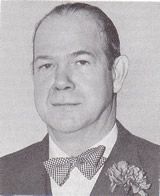
Rupert coles
United Kingdom
Born in 1910, Rupert Coles showed early academic and athletic ability. After school in London, during his six years at King’s College, University of London, he gained a 1st Class Hons BA degree (1931), an Institute of Education Diploma, and, as a Research Scholar, a PhD in Natural Sciences. During this time, he took a full part in the life of King’s College, representing the University in the three sports of running, boxing, and rugby football.
Although he joined the Marketing Division of the UK Ministry of Agriculture in 1934, subsequently moving to the Land Fertility Division, he continued his studies, gaining MSc degrees from the London School of Economics in 1938 and from King’s College, London, in 1940. Twenty years later, he was awarded a Doctor of Science degree by the University of Bonn, while in 1958, he received an Honorary DSc from Mexico.
It was a fortunate decision for the British poultry industry that in 1945, and marking the first step in the formation by the Ministry of Agriculture of the National Agricultural Advisory Service, Dr. Rupert Coles was appointed Chief Poultry Advisory Officer. His main function was to operate a team that, at its peak, was to number over 100 advisers located throughout England and Wales. In the immediate post-war years, there was an urgent need to expand food production, and although initially in most of Europe feedstuffs for livestock were just as scarce as human food, it began to emerge by the mid-1950s that the poultry industry was capable of achieving quite dramatic improvements in growth and efficiency.
The application of improved technology and the dissemination of the latest scientific information on all aspects of egg and poultry meat production were the prime objectives of poultry advisers. Through the imaginative and dynamic leadership of Dr. Coles, a great deal was done to maximize the benefits for the country’s producers. For example, a comprehensive technical data bank was set up; various communication methods were exploited, with Dr. Coles himself being highly active in speaking at discussion group meetings and conferences and writing extensively for the commercial and scientific press. Close liaison was developed with research establishments and leading farmers throughout the country, and perceiving the need for ever-increasing depth of knowledge, he pioneered the establishment of national specialists who were able to become experts in particular sectors of the science of poultry production.
In large measure, the efficiency of UK poultry today owes much to the role played by Dr. Coles from 1945 up to his retirement in 1970. Of course, being at Headquarters in the Ministry of Agriculture, Fisheries and Food (reformulated to include Food in 1956) ensured that Rupert Coles was involved in many other activities ranging across commissions of inquiry, missions to various parts of the world, and innumerable committees and working groups within and associated with the MAFF. As a meticulous worker and forthright speaker, it is hardly surprising that Rupert Coles became the automatic leader of the British poultry industry—a role he fulfilled with great dignity and distinction until his retirement.
In 1946, Dr. Coles joined the World’s Poultry Science Association and from then to the present day has devoted his many talents and a great deal of energy to promoting the objectives of the Association and to helping the organization develop and flourish. Initially, he was the UK member of the publications committee and much involved in the establishment of Branches—he became Chairman of the UK Branch in 1951 and the following year Vice President of the World Association. At the 1954 Congress, he was elected President and served the customary 4-year term. When the Federation of European Branches became formally established at the first European Conference at Utrecht, Netherlands, in 1960, Dr. Coles was elected its first President.
Following the death of Major Ian Macdougall in 1968, he took over as Acting Secretary, subsequently being formally elected at the 1970 Congress in Madrid. Although he retired from this post in 1978 and handed over to his successor, the late Mr. William Naish, Bill Naish’s illness a few months later led to Dr. Coles being persuaded to take back the duties of Secretary for a further term. Due to the cancellation of the 1982 Congress, Rupert Coles continued in this capacity until 1984, completing a remarkable 16-year term. To date, in one capacity or another, Dr. Coles has served as a member of the Executive Committee for over 36 years.
In spite of all these achievements and tireless work for the WPSA, no account of Rupert Coles would be complete without reference to his considerable ability as a linguist and his fine artistic skills in watercolor, sculpting, and the making of reproduction firearms—virtually indistinguishable from their 16th and 17th-century equivalents.

Robert Fraser Gordon
United Kingdom
Robert Gordon was born in Aberdeen, Scotland in 1909 and died on 5th February, 1981. He graduated in Zoology and Geology at the University of Aberdeen in 1930, moving to London to qualify as a veterinary surgeon from the Royal Veterinary College in 1933. From 1934 to 1948, he was head of the Poultry Diagnostic Department of the Central Veterinary Laboratory of the Ministry of Agriculture and Fisheries at Weybridge. Here he was much involved in research into avian salmonellosis, pullorum in particular. This led in 1947 to the award of a DSc by the University of Aberdeen.
When the Animal Health Trust decided to establish Houghton Poultry Research Station in 1948, it was Dr. Gordon who was appointed its Director and given the challenging task of setting up what became, during the ensuing 25 years, his triumph and his memorial. His enormous ability and true crusading spirit overcame many obstacles and attracted a team of keen young scientists. The initially very unpromising temporary facilities were gradually transformed into a center that was to become one of the world’s largest and best-known institutes concerned with avian pathology. It was at Houghton that much basic work on avian coccidiosis was carried out, laying the foundations for improved husbandry measures and the wide range of therapeutic and prophylactic agents subsequently developed.
In 1959, one of Bob Gordon’s major achievements was in persuading Dr. Peter Biggs to leave Bristol University and join the Houghton team to work on the elusive causal agent of the disease commonly known as Fowl Paralysis. Intensive research under Peter Biggs’ direction led to the identification of the virus and the development of a vaccine for what was renamed Marek’s Disease. This in turn resulted in worldwide savings to poultry producers amounting to many millions of dollars.
Throughout his career, Dr. Gordon gave unstintingly to the poultry industry and the veterinary profession both nationally and internationally. At various times he served as a member, secretary, chairman, or president of innumerable committees and associations and was, in addition, a member of many official scientific missions to various parts of the world. After retirement, he continued to play an active part in furthering poultry and veterinary science, working on a new edition of his popular and successful book on poultry diseases and as Chairman of the Council of the Animal Health Trust and honorary scientific adviser to that body. Amongst the recognition he received were many awards of various kinds. These included the Tom Newman International Research Award, the medal of the Poultry Association of Great Britain, the British Oil and Cake Mills Poultry Award, the Dalrymple Champneys Cup and Medal, the Victory Medal of the Central Veterinary Society, an Honorary Doctorate of Veterinary Science from the University of Liverpool, honorary fellowship of the Royal College of Veterinary Surgeons, and appointment as Commander of the British Empire.
While Bob Gordon maintained a close and active interest in the WPSA through his career, serving as a Vice President from 1954 to 1966, it is chiefly as editor of the World’s Poultry Science Journal from 1973 to 1980 that Association members will have most cause to remember him. During these eight years, his endeavors helped the Journal to gain in scientific standing and to increase its circulation—subscribers as well as members. It was also during this period that plans were laid for the change in design that proved so successful when introduced in 1981.
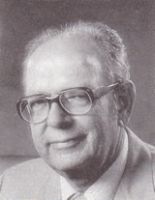
Robb Shelton Gowe
Canada
Dr. Robb Gowe was born in St. Boniface, Manitoba, Canada. He graduated from the Ontario Agricultural College, now the University of Guelph, and Cornell University, where he earned a PhD degree in animal genetics in 1949. A brilliant student, he won many awards throughout his academic career.
Dr. Gowe joined the Experimental Farm Services of Canada Department of Agriculture, now called Agriculture Canada, in 1949 as head of the Poultry Genetics section. When the Poultry and Animal Husbandry divisions and the Animal Biochemistry Sections were amalgamated into the Animal Research Institute in 1959, Dr. Gowe was appointed chief of the Animal Genetics section. In 1965, he was made Director of the Institute, now called the Animal Research Centre, a post which he continued to hold until his retirement in 1986. In 1958-59, Dr. Gowe spent one year as a visiting scientist at the Institute of Animal Genetics in Edinburgh, Scotland.
In 1949, Dr. Gowe initiated his controlled selection experiments in egg-producing poultry. This research involved several large populations, which were selected for multiple objectives and, of great scientific significance, several unselected, random-bred control strains. This was the first selection study in poultry to utilize genetically stable control populations to measure changes in the environment and, thereby, allow genetic changes in selected lines to be precisely assessed. These poultry populations, and a number of new derivatives from them, are still maintained at the Centre. Both the selected and control lines have been widely used by scientists at the Centre, and a variety of other Canadian and international institutions, in experiments where their specific characteristics were of great value. Genetic material from these populations has also been provided to Canadian primary breeders. The long-term selection study has been acknowledged as one of the best-designed experiments in the field of egg-laying research.
The selected populations, some of them under continuous selection for over 30 years, have conclusively demonstrated the feasibility of simultaneously selecting for improvement of several economically important polygenic characters—a scientific result without parallel in animal breeding research. The poultry populations have also made it possible to study a variety of other aspects such as genotype x environment interactions, poultry management, reproduction, and disease resistance.
Through his research, Dr. Gowe has also introduced to the poultry industry valuable techniques for the efficient use of artificial insemination in large-scale commercial breeding operations, a method of quick and easy identification of fertility in unincubated eggs, and procedures for prolonged storage of hatching eggs for large pedigree populations.
As chief of the Animal Genetics Section and later Director of the Animal Research Centre, Dr. Gowe played the leading role in developing the resources and programme of the Centre. It is now a unique institution, and its poultry research facilities are considered among the largest and most comprehensive in the Western world. In many instances, when poultry and animal research facilities have been amalgamated, resources devoted to poultry were disproportionately reduced. Dr. Gowe was able to maintain a strong poultry component within the larger animal research organization; for example, 17 of 50 animal buildings are for poultry.
Dr. Gowe has authored or co-authored more than 70 scientific papers and several technical articles in the areas of poultry breeding, selection, genotype x environment interactions, and a variety of other subjects. Several of these papers are major contributions to the scientific literature, and his studies on breeding techniques are among the most definitive in the world.
Throughout his career, Dr. Gowe has been a valued consultant to the Canadian and international poultry industries. He is a great teacher, capable of talking to a layman and explaining very complex theory in terms which can be readily understood. This is an unusual characteristic in a person not always known for patience when dealing with his peers. He has spent a lifetime adapting advances in science and technology for immediate application by the poultry industries.
In the past 13 years, he has been invited to present 11 papers at international conferences and symposia, several of which were organized by the US or British poultry breeding industries. In 1980, he presented a major invitational paper to the World’s Congress on Sheep and Beef Cattle Breeding in New Zealand on lessons to be learned from poultry breeding.
Dr. Gowe’s scientific excellence has been recognized by the Tom Newman Memorial Award for poultry husbandry research in 1960, the Sir John Hammond Memorial Trust Lectureship in England in 1974, the Public Service of Canada Merit Award in 1980, and the highest award of the Canadian Public Service. This last award recognized both his scientific and management contributions to the programme of the Research Branch of Agriculture Canada. In 1984, he was made a fellow of the Poultry Science Association and received the Certificate of Merit from the Canadian Society of Animal Science.
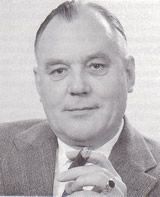
Heinrich Havermann
Germany
Heinrich Havermann, born on the 29th of January 1909 in Benrath near Düsseldorf, dedicated a substantial part of his life’s work to poultry and poultry science. Following his studies in agriculture and zoology at the universities of Kiel and Bonn, in 1935 he began his scientific career as an Assistant in the Institute for Animal Breeding and Animal Feeding at the University of Bonn. He completed his doctoral studies in 1939.
With his dissertation The Rhineland Poultry Pedigree Breeding and its Importance for Poultry Breeding in the Region, he made a valuable contribution to the intensively pursued breeding performance in poultry with the help of the Pedigree Breeding Book.
His scientific activity was interrupted during the war. He was able to take it up again in 1945 and completed his Habilitation in 1946 at the University of Bonn in the discipline of Animal Breeding and Animal Feeding. His appointment as a supplementary Professor followed in 1947 and he was made Extraordinary Professor in 1950. At the same time, he was assigned the Chair in Small Animal Breeding and Management. In 1954, he was appointed Full Professor and Director of the Institute for Animal Breeding and Animal Feeding. He continued in this position until his untimely death on November 22, 1971.
For 35 years, Heinrich Havermann exerted an extraordinarily broad influence in the field of animal breeding research. It is especially important to recognize that, in spite of the multiple demands made on him, he continued to promote the field of poultry management and research. Many works in the broad area of rearing, management, and feeding of poultry were produced by Dr. Havermann and his students. One of the accomplishments in his Institute was the establishment of methods for conducting modern laying and feed utilization tests in Germany. At an early date, he installed modern equipment for data processing and the evaluation of research in his Institute, and he initiated and promoted numerous research reports, diploma theses, and doctoral dissertations, particularly relating to poultry feeding and management.
The reestablishment of German poultry science and its international recognition were due in large measure to the efforts of Heinrich Havermann. As a result of his various contacts with large numbers of poultry researchers in Europe and overseas countries, it was possible to establish in 1951 the German Branch of WPSA and to gain close contact with other Branches and poultry specialists. For 20 years, from 1952 to his death, he served as President of the German Branch of the WPSA.
In addition, he was co-founder of the internationally recognized journal Archiv für Geflügelkunde and served as co-editor from 1952 until 1971.
He lent his broad experience to numerous committees of the German and international poultry industry, where not only his technical expertise but also his skill as a negotiator were sought after and appreciated. It gave him great pride to see many of his students holding important positions in the poultry industry and poultry science.
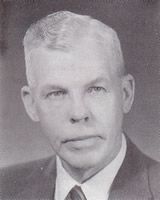
Frederick Bruce Hutt
USA
Dr. Frederick Bruce Hutt was born in Guelph, Ontario, Canada, on August 20, 1897. His undergraduate studies were at the Ontario Agricultural College (now the University of Guelph), and he received master’s degrees from the University of Wisconsin (genetics) and the University of Manitoba (zoology). The University of Edinburgh awarded him a PhD (genetics) in 1929, and in 1939 conferred upon him a DSc (genetics).
He served as Lecturer, Assistant Professor, and Associate Professor at the University of Manitoba, and then for three years was Professor at the University of Minnesota. In 1934, he moved to Cornell University, where he was Professor and Head of the Poultry Department. Following a five-year interim as Professor and Head of the Zoology Department at Cornell, he returned to the Poultry Department as Professor. In 1965, he retired with the rank of Emeritus Professor of Animal Genetics at Cornell.
He is the author of more than 250 scientific papers in various journals and has published four textbooks. Among the latter are Genetics of the Fowl (1949) and Animal Genetics (1964), both widely used as textbooks in universities throughout the world. Genetics of the Fowl has been translated into both Spanish and Polish; it is still the ‘bible’, sought and treasured by poultry breeders and geneticists everywhere.
He has served on the Editorial Board of the Journal of Heredity and has been a visiting lecturer at numerous universities in the USA and Ireland. Among his many awards have been the Borden Award, the Tom Newman Memorial International Award for Poultry Research, and an honorary Doctor of Science from his alma mater, the University of Guelph. He is a member of the American Poultry Hall of Fame and is an Honorary Fellow of the Royal Society of Edinburgh.
Dr. Hutt has never lost the ability to combine teaching with a strong research programme. He has been a strong leader in the application of genetics for resistance to disease, concentrating on the “avian leucosis complex,” pullorum disease, and nutritional diseases. He demonstrated that such successful use of genetic selection for resistance to disease could be combined with selection for other economic traits, important to the industry worldwide and effective even when combined with other modern disease control measures.
His initial report on sex-linked dwarfism, followed by a detailed report in 1959 citing the effects of the gene on many important innovations in poultry breeding, including measuring egg production to a given age (500 days), the “double shift” procedure for testing young males as sires, and the application of the concept of selecting breeders on the performance of their progeny (the progeny test).
Throughout a distinguished research career, Dr. Hutt never lost his interest in teaching students. At the undergraduate level, he pioneered a new course in Animal Genetics, which he taught to generations of veterinary students prior to his retirement. For many years, he taught a course in Poultry Genetics, primarily to graduates. Believing in the importance of close and direct professor/graduate student relationships, he steadfastly limited the numbers. Nevertheless, more than a score of his students have gone on to distinguish themselves at various institutions throughout the country.
Dr. Hutt continues to reside near the Cornell campus in central New York State.
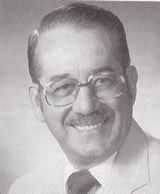
A. William Jasper
USA
A native of Pennsylvania, Dr. Jasper received degrees in Poultry Science and Agricultural Marketing from the University of Vermont, Ohio State University, and Cornell University. His professional experience includes employment as a Marketing Specialist with the US Department of Agriculture, Managing Editor of Poultry Tribune, and Associate Professor of Farm Management and Marketing at Cornell University, where he was heavily involved in poultry extension activities.
For 23 years, Bill Jasper worked for the American Farm Bureau Federation (AFBF) and its affiliated American Agricultural Marketing Association (AAMA), where he was initially involved with contract broiler growers and integrated broiler companies. He spent most of his time as Director of AFBF’s Poultry Department and Manager of AAMA’s Poultry Division, being involved with local, regional, national, and international activities. He also served a stint with AFBF as Secretary for Market Development and Research. He was Director of the Bureau’s Marketing Division when he resigned to enter a purely commercial endeavor.
Bill spent 2½ years as International Vice President and Director of Technical Services for Agrimerica, traveling and working with feed manufacturers and other commercial firms in over 30 countries. He came to California in January 1985, as General Manager of Consolidated Producers Association. On July 1st of that year, he became President and General Manager of West Coast United Egg Producers.
Dr. Jasper is an active member of several professional organizations. He has served on a number of domestic and international agricultural committees and as a Consultant for the Food and Agricultural Organisation of the United Nations in Rome and India. He is a Past President of the American Poultry Historical Society and a former Member of Council representing the United States on the International Egg Commission.
Bill Jasper is a Life Fellow of the International Biographical Association of Cambridge, England, and he has been decorated twice by the French Government for his agricultural work. He served two separate two-year terms as President of the American Poultry Historical Society and contributed a chapter on “Marketing” in the book American Poultry History, 1823-1973. He has published over 200 popular trade journal articles and has been contributing editor for one French, two American, and two British agricultural publications. He also wrote a history of WPSA, which appeared in World’s Poultry Science Journal.
Dr. Jasper has made many significant contributions to the advancement of WPSA. He was a founding member of the USA Branch of WPSA in 1965 and served as its first Vice President. Shortly after the formation of the Branch, he became its President upon the untimely death of the first Branch President, Dr. C.D. Carpenter. He also served as Vice President of WPSA (1971-1974) and as President (1974-1978). Dr. Jasper was a member of Council from the USA (1963-1971) and served on the WPSA Constitution Committee, which provided a revision of the 60-year-old document, adopted in 1972. He has also visited many WPSA Branches worldwide and promoted WPSA activities.
Dr. Jasper resides in Alta Loma, California, with his wife, Dee.
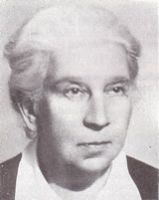
Laura Kaufman
Poland
Professor Laura Kaufman (1889-1972) was an outstanding biologist-geneticist and specialist in poultry breeding. She was a member of the Polish Academy of Science, Professor and Doctor Honoris Causa of the Agricultural College of Lublin, Honorary President of the Polish Society of Animal Husbandry, co-organizer and first President of the Lublin Scientific Society, and an Honorary Life Member of the World’s Poultry Science Association.
Laura Kaufman graduated in Zoology from the Jagiellonian University in Cracow in 1911. Her career started in 1919 when she joined the Department of Embryology and Biology of the Medical Faculty at the university, where, under the influence of the prominent embryologist, Professor E. Godlwski, Junior, she developed her scientific interests and personality. She became an expert in experimental embryology during these seven years and published her first works in this field, including her PhD thesis on salamander embryo degeneration.
In 1919, she joined the National Scientific Institute of Rural Farming in Pulawy as an assistant in the Department of Experimental Morphology, where her research focused on the development of organisms in different species and breeds of birds. Her work resulted in a set of 40 papers published on chicken and pigeon embryos, studying the factors influencing their growth and development.
In 1932, Laura Kaufman became the head of the Department of Experimental Biology, later renamed the Department of Breeding Biology. Her research on temperature effects on chicken embryo growth and development during artificial incubation was significant for the poultry industry.
After World War II, Professor Kaufman resumed her work and became a Professor of Genetics and Poultry Husbandry at the Faculty of Agriculture of Maria Curie-Skłodowska University in Lublin. She introduced new studies on heterosis and developed an autosexing breed, the Polbar hen.
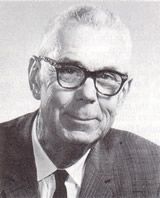
John E. Kimber
USA
John E. Kimber was born in New York City on March 14, 1895. After the death of his father, he moved to California at the age of 14. As a teenager, he started a poultry project, envisioning a production plant of a million hens—a groundbreaking goal at the time.
He graduated from Stanford University with a major in agriculture and a minor in music, later pursuing graduate studies at Oregon State University under Professor James Dryden. In 1925, he founded the Kimber Poultry Breeding Farm in Niles, California, which became renowned for its Leghorn poultry.
Mr. Kimber was a pioneer in applying genetic principles to poultry breeding, establishing a research team of geneticists and veterinarians at Kimber Farms. The farm became a major operation, expanding nationwide and internationally in broiler and turkey lines. He also supported publicizing the farm’s research in scientific journals and funded the Kimber Genetics Award for genetic research.
John E. Kimber passed away on May 16, 1970.
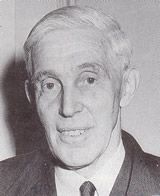
Ian Macdougall
United Kingdom
Major Ian Macdougall was born in Scotland in 1882 and passed away in 1968. He served in the South African and British Armies for 14 years, earning the Order of Officer of the British Empire for his services in World War I.
In 1920, after his military service, he became a poultry farmer and was later appointed Secretary of the British National Poultry Council. His administrative talents led him to become Secretary of the WPSA in 1951, and he contributed significantly to its financial stability and global growth. He remained Secretary of the European Federation of WPSA Branches from its founding in 1960 until his death.
Ian Macdougall received the first Macdougall Award in 1962, named in his honor, for his exceptional service to WPSA. He devoted over 30 years of his life to WPSA and remained active until his death.
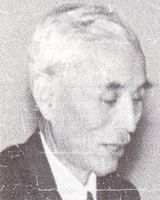
Kiyoshi masui
Japan
Professor Kiyoshi Masui was born in Shizuoka, Japan, in 1887 and passed away in 1981. He completed the Veterinary Science course at Tokyo University, graduating in 1915, and went on to obtain his PhD in Veterinary Science in 1921.
Following his appointment as an Assistant Professor at the University of Tokyo in 1922, most of his pioneering work on the domestic fowl was conducted there. He retired as a full Professor in 1948 and was made Professor Emeritus shortly thereafter. In 1951, Dr. Masui was appointed as a Professor at Nagoya University and became Dean of the Faculty of Agriculture, holding these positions until his retirement from Nagoya in 1958.
At the age of 73, he became Director of the Masui Poultry Institute, established to conduct research into animal genetics, particularly the genetics of sex determination and differentiation in the domestic fowl. Dr. Masui’s major contribution to the world poultry industry was the development of the sexing technique for day-old chicks, based on his fundamental studies of sexual differentiation in fowl. In his anatomical studies on the genital organs of the domestic fowl, he discovered a small rudimental copulatory organ in the cloaca of male chicks. In 1925, he reported the possibility of determining the sex of day-old chicks by examining the presence or absence of this organ with the naked eye.
His method of sex determination was presented at the 3rd and 6th World Poultry Congresses in 1927 and 1936, respectively. His work on sex determination and sexual differentiation in fowl was published by the University of Tokyo Press in 1967.
Dr. Masui worked tirelessly to propagate the sexing technique globally, founding the Japanese Chick Sexer’s Association. This organization trained many professional chick sexers, who were sent to North and South America, Europe, and Australia. The method, now used by nearly all hatcheries worldwide, has greatly reduced feed and labor costs in the modern poultry industry.
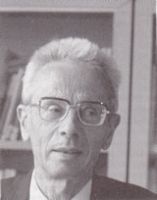
Philippe Mérat
France
Philippe Mérat was born in France on February 29, 1927. After graduating as an Ingénieur Agronome from the Institut National Agronomique in 1951, he spent his entire career at the Institut National de la Recherche Agronomique (INRA), initially at the Poultry Research Station and later heading the Mendelian Genetics Laboratory from 1970.
As a geneticist, his work focused on the effects of Mendelian factors on economic traits. His thesis on this topic earned him the title of Docteur ès Sciences in 1966. He was among the first to demonstrate that selection for economic traits in poultry could employ simple genetic factors as biological markers. His research required meticulous monitoring and analysis of performance, economic production, and environmental responses.
He played a key role in utilizing a mutation for dwarfism (dw) in female broiler lines, which were then marketed by the French company ISA. He also worked on lines for egg-laying and conducted research on heat tolerance and meat percentage increase in birds carrying the naked-neck gene (Na). His work extended to developing countries, including collaborations with universities in Belgium and Egypt, where he studied the heat-resistant Fayoumi breed.
Dr. Mérat was a member of the French Branch of WPSA and served as its Secretary from 1969 to 1972. He contributed significantly to the WPSA’s Genetics and Breeding Working Group and served as an Associate Editor of the World’s Poultry Science Journal.
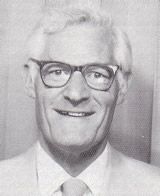
Trevor Raymond Morris
United Kingdom
Trevor Raymond Morris was born on April 11, 1930, and educated at Rendcomb College in Cirencester, England. He graduated from the University of Reading in 1951 and earned a PhD in 1966 and a DSc in 1981 from the same university.
Dr. Morris taught and conducted research in Poultry Science and Production at Reading University from 1954. From 1981 to 1984, he was a Professor of Agriculture and later became Professor of Animal Production and Head of the Department of Agriculture and Horticulture at Reading.
Dr. Morris made significant contributions to poultry science, with over 100 published papers. His work on photoperiodic responses in fowl revolutionized poultry management by enabling high egg production year-round through artificial lighting programs. He also made important contributions to understanding the interactions between energy and protein in poultry diets and developing mathematical models for nutritional requirements.
He served the WPSA as a Council Member, President of the UK Branch, and Vice President.
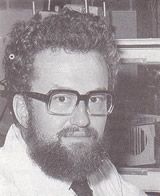
Charles George Payne
Australia
Charles George Payne was born in the UK in 1935 and passed away in Australia in 1977. He graduated with First Class Honours in Agriculture from the University of Nottingham in 1957 and earned a PhD from the Royal Veterinary College, London, in 1960. He joined the University of Sydney in 1967 as Research Director of the Poultry Husbandry Research Foundation and became an Associate Professor in 1973.
His research on environmental-nutrition interactions significantly advanced poultry production under varying climatic conditions. He also made important discoveries, including the role of biotin in the “fatty liver and kidney syndrome,” which had a major economic impact on the broiler industry.
He trained many students, contributing to the development of the Australian and Southeast Asian poultry industries.
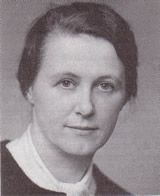
D.I. Sue Richardson
United Kingdom
Sue Richardson began her career as a poultry economist at Manchester University in 1948, where she made the university a center for poultry economics research. She published 156 papers and conducted international research on poultry production and marketing, especially focusing on how eggs and poultry meat could solve global food problems.
She contributed significantly to international organizations such as FAO and the International Egg Commission (IEC), where she established a statistical service to aid the egg industry. She chaired the IEC’s Economics and Statistics Committee and led WPSA’s Economics and Marketing Working Group from 1976 to 1986.
Her work fostered interdisciplinary cooperation between scientists and economists, benefiting farmers worldwide.
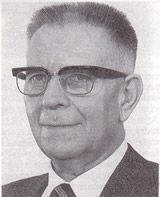
Christiaan Romijn
The netherlands
Christiaan Romijn was born on August 7, 1910, in Domberg, Netherlands, and passed away on January 2, 1988. He earned his Doctoral degree in Animal Physiology in 1931 and a Doctor of Philosophy in Mathematics and Physics in 1935 from the University of Utrecht.
Romijn made significant contributions to poultry science, particularly in energy metabolism, thermoregulation, and embryo respiration. He was a founding member of the Dutch Branch of the WPSA and served as its Chairman from 1958 to 1972. He was instrumental in organizing the first regional WPSA congress in Utrecht in 1960 and continued to advise the poultry industry until his retirement.
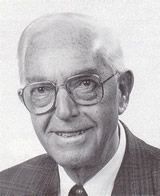
Hans Schlütter
Germany
Hans Schlütter was born on January 20, 1913, in Haldern am Niederrhein, Germany. He studied agriculture at Bonn and earned his Doctor of Agriculture degree in 1953 with a thesis on methods to combat Pullorum disease. He dedicated his career to the reorganization of poultry science education and the modernization of research in Germany.
Schlütter became Director of the Agricultural Chamber of the Rheinland and played a prominent role in Germany’s poultry industry, including leading the German Poultry Industry organization. He helped establish animal welfare regulations across the European Community and co-founded the German Branch of the WPSA, serving as its President from 1974 to 1987.
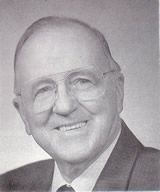
Donald McQueen Shaver
canada
Donald McQueen Shaver was born in Cambridge, Ontario, on August 12, 1920. He showed an early passion for poultry, breeding a pen of layers at age 15 that excelled in a national egg-laying test. After serving in World War II, he founded Shaver Poultry Breeder Farms Ltd., which became a global leader in poultry breeding.
Shaver’s work aimed to make poultry production efficient and accessible worldwide. His company operated in over 90 countries, and he was committed to poultry education and research, particularly through partnerships with institutions like the University of Guelph and Cornell University.
In recognition of his contributions, McGill University awarded him an Honorary Doctor of Science in 1983.

Ian Ramsay Sibbald
United Kingdom
Dr. Ian Ramsay Sibbald was born in England and graduated from the University of Leeds with a BSc in Agriculture in 1953. He emigrated to Canada and earned his MSc (Animal Science) and PhD (Animal Nutrition) degrees from the University of Alberta.
Dr. Sibbald was renowned for his contributions to poultry nutrition, particularly for developing the True Metabolizable Energy (TME) bioassay, which became an industry standard. His TME assay provided more accurate assessments of feed ingredients and was used globally by poultry producers. Dr. Sibbald’s work influenced feed formulations and saved companies significant amounts of money. He also extended the principles of the TME assay to amino acids, lipids, and minerals.
He authored 144 scientific papers and received numerous awards, including the Tom Newman Memorial International Award in 1977 and a Doctor of Science degree from the University of Leeds in 1982.
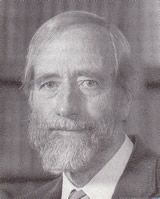
stanley james slinger
canada
Professor Stanley Slinger had a long and distinguished association with Guelph and the poultry industry. He studied Poultry Science, earning a BSA degree in 1937 and an MSA in 1941. He worked in the Department of Poultry Husbandry from 1940 to 1964, quickly advancing through the academic ranks to become a Professor. In 1964, he became Chairman of the Department of Nutrition, serving in that role for two five-year terms. He retired in 1979 and was made Professor Emeritus.
Dr. Slinger’s career spanned an era of remarkable progress, during which poultry production transformed from mystique and husbandry into a science-driven industry. When he began, successful diets relied on “growth factors,” without an understanding of dietary energy’s importance. By the time he retired, all essential nutrients had been identified, and nutrient-dense diets were the standard for the industry.
Dr. Slinger’s contributions included pioneering research on the metabolizable energy values of feed ingredients, which laid the groundwork for the modern poultry feed industry. He played a central role in developing Canola meal as a valuable protein source, enhancing its nutritional value for poultry. His research was documented in over 250 scientific articles.
Throughout his career, he was recognized with numerous awards, including the American Feed Manufacturers Association Award, the Canadian Feed Industry Association’s “Golden Award,” and the Queen Elizabeth Jubilee Medal. Dr. Slinger was a Fellow of the Agricultural Institute of Canada, the Poultry Science Association, and the American Institute of Nutrition.
NEWSLETTER
The WPSA Newsletter is published
six times per year.
World's POULTRY
SCIENCE ASSOCIATION
Working together to feed the world






















